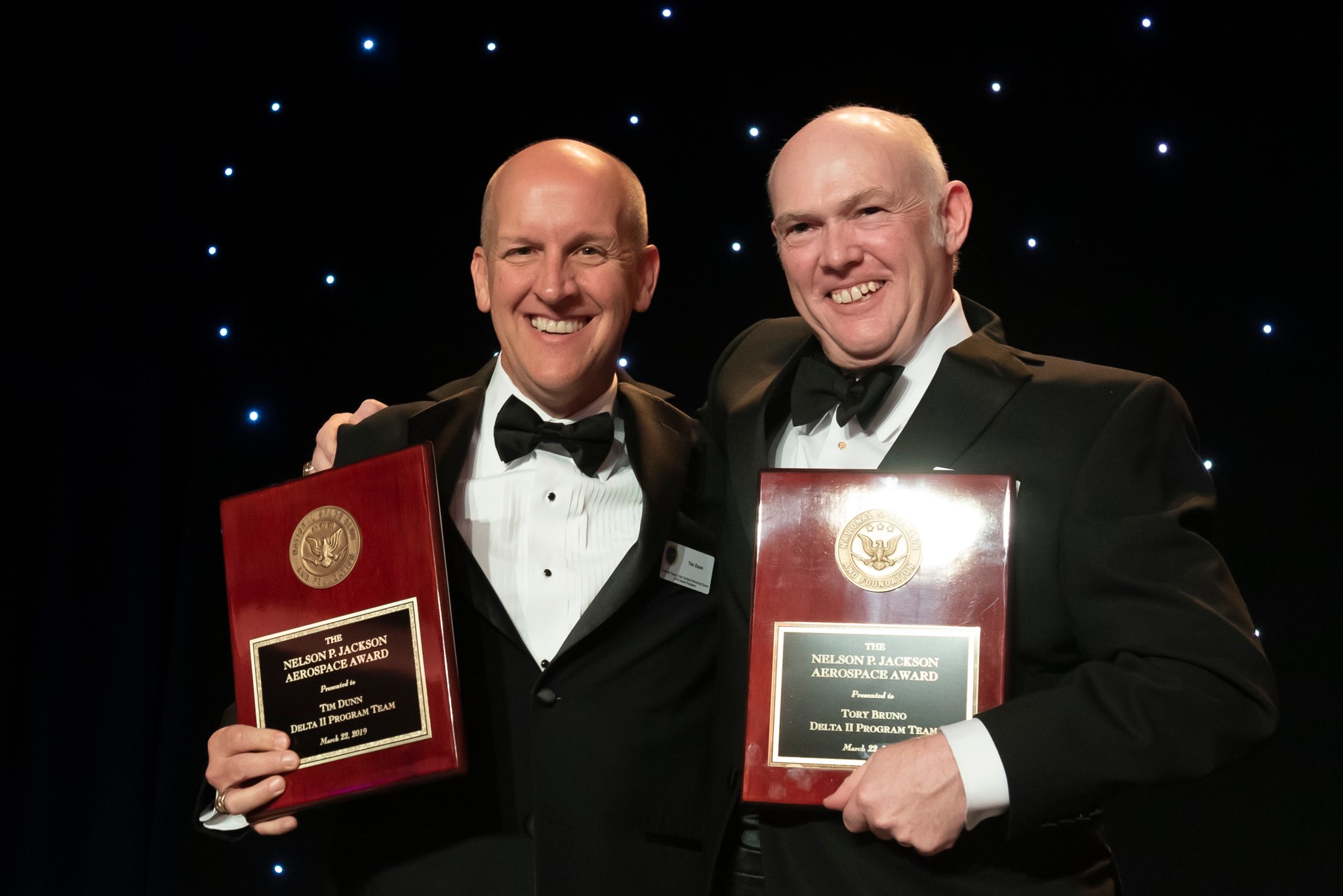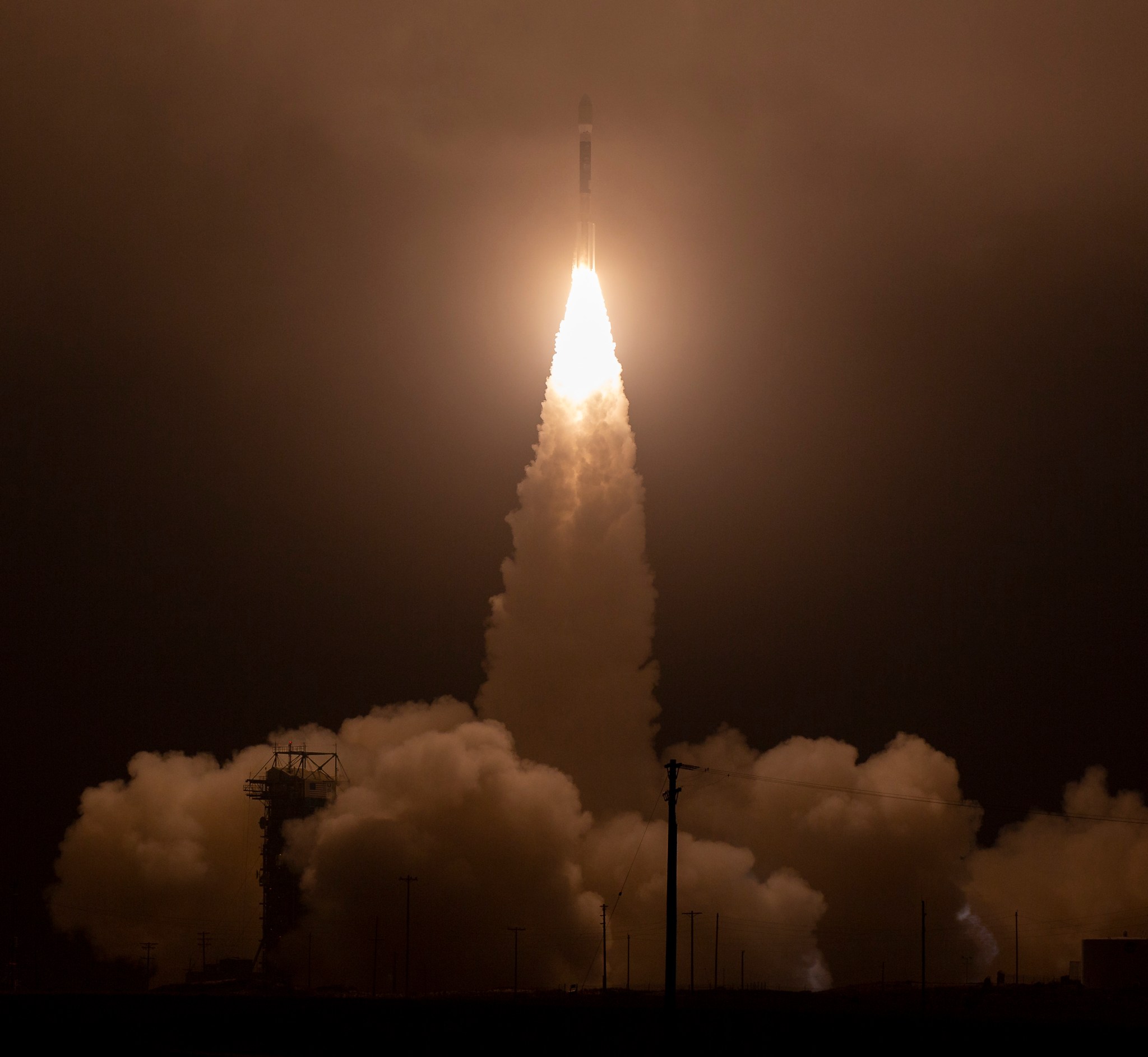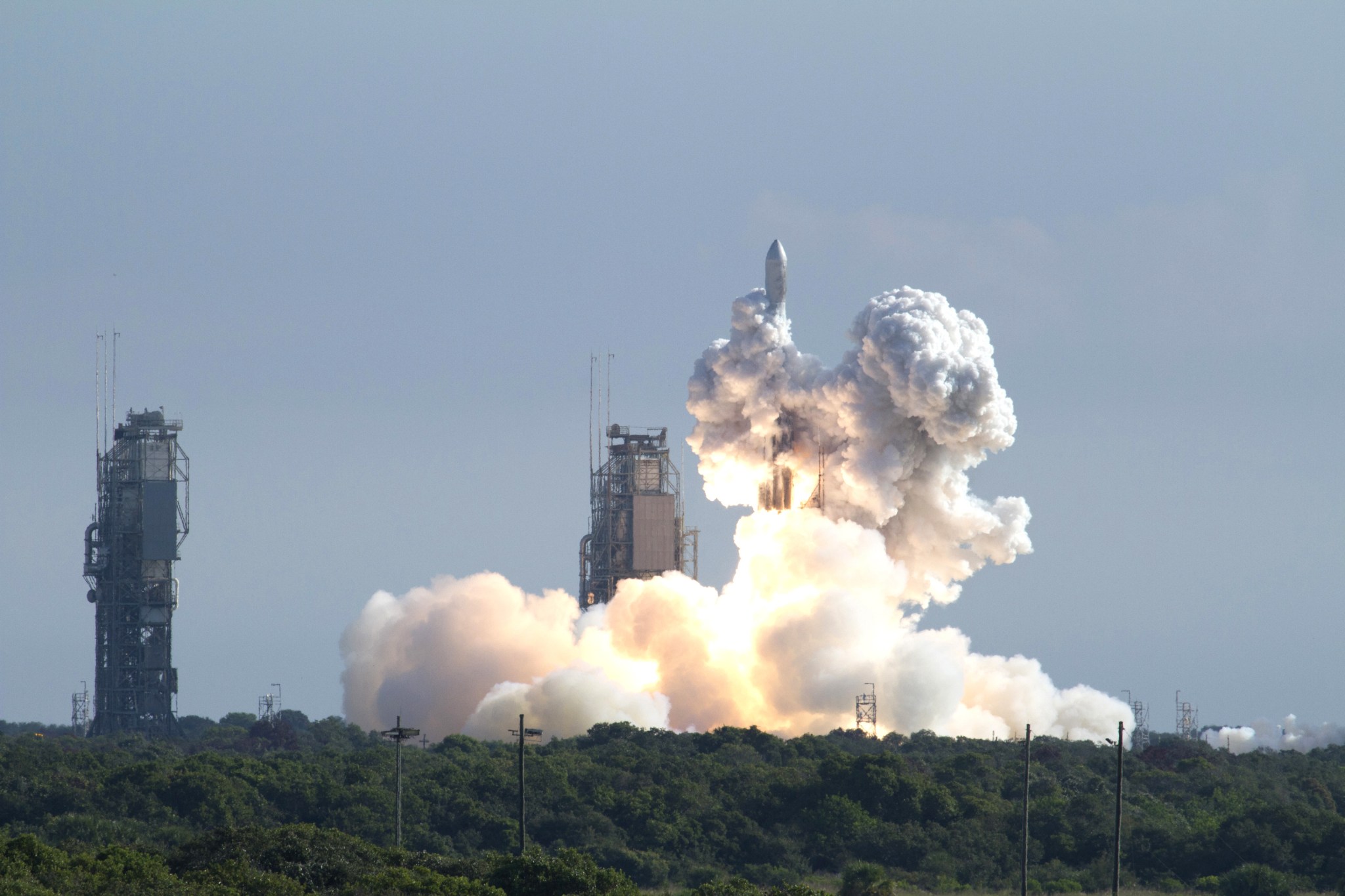The Delta II Program Team from NASA’s Launch Services Program (LSP) and United Launch Alliance (ULA) received The Nelson P. Jackson Aerospace Award for 2019 from the National Space Club and Foundation. Tim Dunn, NASA launch director, and Tory Bruno, president and CEO of ULA, accepted the award on behalf of the team during a ceremony March 22, 2019, in Washington, D.C.
“I was incredibly honored to accept the award on behalf of the entire LSP Delta II team,” Dunn said. “The Delta II has always been special and over its 30-year lifetime it has touched so many people in the space field.”

Nicknamed the “industry workhorse,” Delta II’s outstanding accomplishments include 155 total missions: 57 national security missions for the U.S. Air Force, 52 missions for NASA and 46 commercial missions. It holds the record for launching more satellites in a 90-day period than any other launch vehicle to date — five missions (17 satellites) from June 10 to Aug. 17, 1999.
Cheering on from the audience in recognition of Delta II’s amazing legacy were people from the U.S. Air Force, the space science community, several NASA centers, ULA, Boeing and Lockheed Martin. Among the satellite manufacturers present were Ball Aerospace, Boeing and Lockheed Martin.
Dunn described the Delta II launch team as a tight-knit group, from its inception almost 60 years ago with the Thor rocket. Delta I was designed on the Thor rocket’s heritage in the late 1950’s and first launched in 1960. As it went from Delta I to Delta II from 1960 to 2010, and to the present day, the Delta family remained close-knit.
“That contributed to the rocket’s success because of the way the team was constructed. It is a relatively small, agile and certainly highly capable launch team,” Dunn said.
Readers not as familiar with Delta II’s history may be surprised to learn that the rocket was responsible for a couple of things that we usually take for granted. The first is the Global Positioning Satellite (GPS), launched for the U.S. Air Force.
“Delta II populated the operational GPS constellation of satellites and turned it into the navigation utility that we use in our everyday lives. We all use GPS on our phones, our watches and in our cars. Delta II launched all 48 of those satellites from 1989 to 2009,” Dunn said.

Delta II also contributed to the science community. It laid the groundwork for Curiosity, the current rover on Mars. The Mars Pathfinder rover launched on a Delta II just over 20 years ago; it was followed up about 6.5 years later with Spirit and Opportunity — the twin rovers that launched on separate Delta II rockets.
“What was learned from Pathfinder, was then used in Spirit and Opportunity, and then built upon for Curiosity,” Dunn said. “Another large, much larger rover, Mars 2020, will launch next year, and we’ll learn from it as well, and again reflect on Delta II as the vehicle that put the first two generations of rovers on Mars.”
One of Delta II’s first missions for NASA was the Mars Global Surveyor, which launched on Nov. 7, 1996, from Complex 17-A at Cape Canaveral Air Force Station in Florida. The surveyor mapped Mars’ surface features and examined its atmosphere and magnetic properties. On its final mission, Delta II launched NASA’s Ice, Cloud and land Elevation Satellite-2 (ICESat-2) on Sept. 15, 2018, from Vandenberg Air Force Base in California. It also was the 100th consecutive successful launch for the rocket.
Dunn described the last mission as a time for celebration, but also a poignant time as the launch team said goodbye to a versatile and very dependable launch vehicle.
“It was the final goodbye to a faithful friend — if a rocket can be a friend,” Dunn said. “After launch, the team had a celebration to tie a symbolic bow on the incredible legacy of Delta II.” Many Delta II team members, past and present, traveled to California on their own just to be part of that last launch.
“We saw a lot of old friends from past missions, including technicians, quality professionals, engineers, managers and many others,” Dunn said. “It was the appropriate time to celebrate the legacy and the huge success of what Delta II meant to the team members individually and also to the entire space industry.”

Highlights of Delta II’s launch history include Earth observing, science and interplanetary satellites, managed by the Delta II launch team. NASA’s Mercury, Surface, Space Environment, Geochemistry, and Ranging (MESSENGER) spacecraft launched on Aug. 3, 2004, from Complex 17-B. On March 17, 2001, it became the first spacecraft to orbit Mercury, our solar system’s innermost planet. GLAST, the Gamma-ray Large Area Space Telescope, launched from Complex 17-B on June 11, 2008, on a mission to study gamma rays in space.
The twin Gravity Recovery and Interior Laboratory (GRAIL) spacecraft launched Sept. 10, 2011, from Complex 17-B on the final Delta II Heavy and final mission to launch from that historic pad; their destination — the Moon.
That’s the rocket side. But there’s also the customer side, including Goddard Space Flight Center in Greenbelt, Maryland, and the Jet Propulsion Laboratory in Pasadena, California, LSP’s two primary customers that account for 90 percent of NASA’s missions.
“It easily numbers into the thousands of people who, over the years, have worked on the Delta II rocket and its many missions that NASA has launched,” Dunn said. “In receiving this award, I was humbled to represent all members of the NASA Delta II teams throughout the years for both the spacecraft and the rocket.”
The recipient of this award is selected annually by the National Space Club from the aerospace industry. The selected firm is recognized for an outstanding contribution to the missile, aircraft and space field during the preceding year. The award is a memorial to the late Nelson P. Jackson, one of the founders and past president of the National Space Club.
“I would like to thank the National Space Club for their recognition of the Delta II team and its many contributions,” Dunn said. “We’re also very grateful for a strong relationship with ULA in launching on this venerable rocket over many years.”

























